The Neuroscience of Composure and How to Build It in Practice
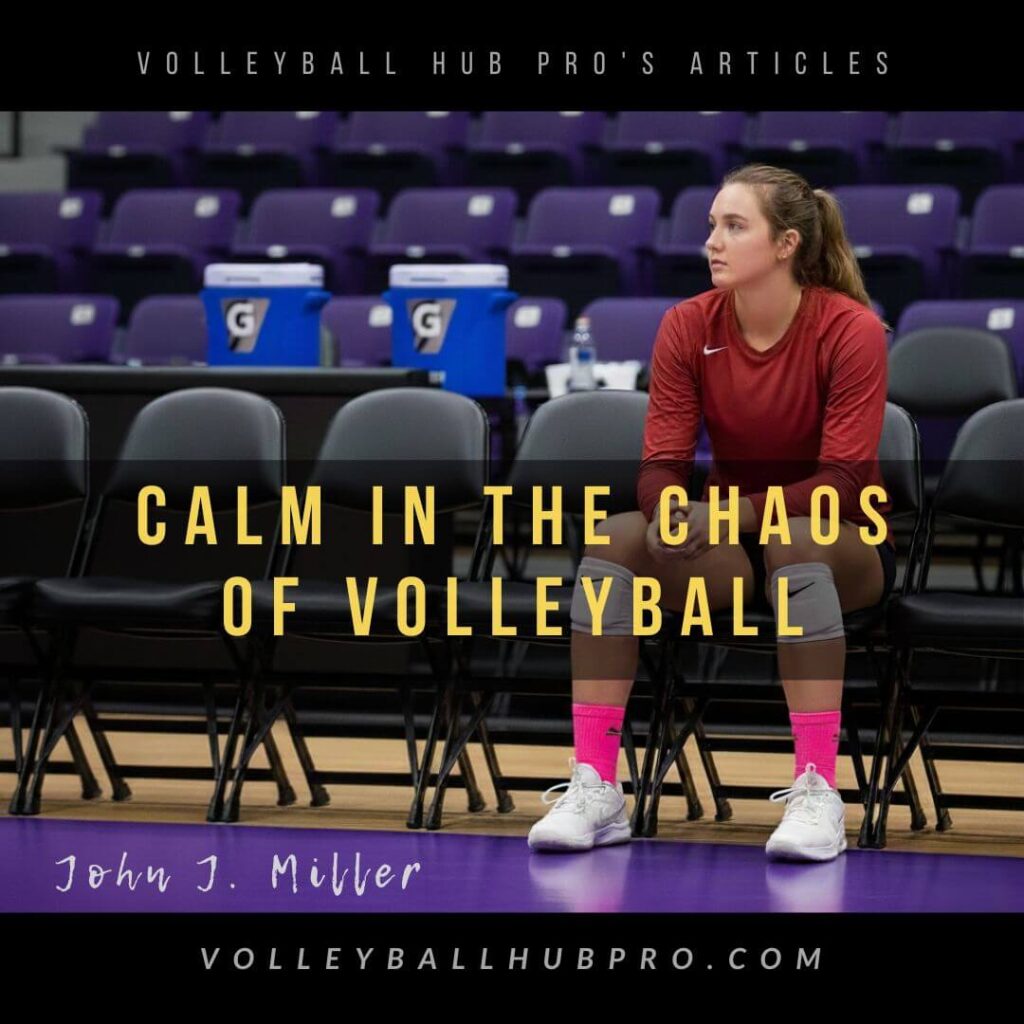
| Author | John J. Miller |
| Article Depth | Comprehensive / In-Depth |
| Required Knowledge | Intermediate |
| Primary Audience | Volleyball Coaches |
When the Mind Becomes the Opponent
We have all witnessed the ghost in the machine. It appears in the fifth set when our most fluid outside hitter, whose arm swing is a model of violent grace in practice, develops a slight, almost imperceptible hesitation before a critical swing. It possesses the setter who, moments before, was a maestro orchestrating the offense, and suddenly sees only the opposing blockers, their hands frozen by a flood of indecision. This phenomenon, often dismissed with locker-room labels like “choking” or “getting tight,” is not a failure of will, talent, or preparation. It is a predictable, biological event—a tactical sabotage staged not by the opponent across the net, but by the intricate wiring of the athlete’s own brain.
At the heart of this breakdown is a neurological power struggle between two key areas of the brain: the Prefrontal Cortex (PFC) and the Amygdala. Think of the PFC as the team’s head coach. It is the center of executive function—cool, deliberate, and responsible for strategic planning, complex decision-making, and emotional regulation. It is the part of the brain that allows a player to process a scouting report and adjust their attack based on the blocker’s position. The Amygdala, in contrast, is the brain’s primal security alarm. It is not strategic; it is reactive, designed for one purpose: to detect threats and trigger an instantaneous, life-preserving response.
Under normal competitive conditions, the “coach” is in charge, running a top-down operation. But in moments of acute stress—match point, a hostile crowd, a string of unforced errors—the “alarm” can pull the ultimate override. Triggered by the perceived threat, the Amygdala floods the system with stress hormones like norepinephrine and cortisol. This chemical cascade effectively disconnects the PFC, a state neuroscientists call “hypofrontality.” The head coach is sidelined. Neural traffic is rerouted from the slow, analytical parts of the brain to the fast, instinctual circuits. The athlete loses access to their complex tactical knowledge and emotional control, resulting in the tunnel vision that makes a setter blind to an open hitter or the panicked reaction that leads to a shanked pass. They have been hijacked by their own neurobiology.
This emotional hijack is often compounded by a second, more insidious mechanism described by Dr. Sian Beilock as the “Explicit Monitoring Hypothesis.” The very skills that define an elite athlete—a jump serve, a setting motion, a defensive movement—have been honed over thousands of hours of repetition until they are stored in procedural memory. They are automated, run by the brain’s efficient autopilot system, functioning outside of conscious thought. Pressure introduces a terrible paradox: in the moment we need our skills to be most automatic, our conscious mind decides to intervene.
The desire to “make sure” the pass is perfect or the serve goes in causes the athlete to shift from their implicit, autopilot system back to the explicit, manual control of the PFC. They begin to consciously monitor the step-by-step mechanics of a movement that should be fluid and whole. They think about their elbow angle, their wrist snap, the height of their toss. In effect, they are trying to manually fly a sophisticated aircraft that is designed to fly itself, and in doing so, they disrupt the seamless, integrated motor program. The result is a jerky, hesitant, and ineffective action. The very act of trying to force a perfect outcome becomes the direct cause of the error. This is the anatomy of paralysis: a brain at war with itself, where the instinct for survival and the desire for control conspire to dismantle the very skills we have worked so tirelessly to build.
Reframing and External Focus
The impulse is almost irresistible. An athlete is struggling, their timing is off, and our instinct as coaches is to rush in with a flood of technical data. “Keep your elbow high. Get your hand to the ball. Snap your wrist.” We believe we are helping, providing a clear, mechanical roadmap back to success. Yet, in doing so, we are often unknowingly pouring fuel on the fire of analysis paralysis. We are forcing the athlete’s conscious mind—the very part of the brain that is failing them under pressure—to engage even more deeply. If the brain’s explicit monitoring system is the cause of the breakdown, then our language must be the antidote, not another dose of the poison.
The most potent shift we can make in our coaching is to move from an internal to an external focus of attention. Grounded in the extensive research of Dr. Gabriele Wulf, this principle is devastatingly simple and profoundly effective. An internal cue directs the athlete’s attention to their own body parts and movements. An external cue directs their attention to the effect of their movement on the environment. It is the difference between telling a hitter to “snap your wrist” (internal) and telling them to “whip the ball past the blocker’s ear” (external).
This is not a semantic game; it is a neurological cheat code. An external cue allows the brain’s sophisticated motor system to self-organize without the clumsy interference of the conscious mind. It bypasses the PFC’s tendency to micromanage, engaging the faster, more efficient implicit pathways that control fluid, automated skill. We must audit our own feedback. “Get your feet to the ball” becomes “Beat the ball to the spot.” “Extend your arm” becomes “Push the ball to the back corner.” By shifting the athlete’s focus from their body to the target, we distract the conscious mind and liberate the trained body to do its job.
This same linguistic discipline must be taught to our athletes for their own internal monologue. An athlete’s self-talk is a constant stream of coaching feedback, and if it is corrosive, it is just as damaging as any poorly phrased cue from the sideline. We must equip them to reframe their inner narrative, transforming it from a source of pressure into a tool for performance.
First, we teach them to run a brutal “Performance P&L” on their thoughts. When a player is caught ruminating on a missed serve, we can guide them with a direct question: “Is that thought profitable for this next point?” The answer is always no. Dwelling on the past is a net loss; it subtracts focus and energy without offering any return. Framing it this way leverages their competitive mindset to discard thoughts that are actively hurting their ability to win the next rally.
Second, we fundamentally alter their perception of risk by recasting their actions as experiments rather than pass/fail verdicts. The fear of making a high-stakes error is a primary driver of overthinking. By encouraging a player to “run an experiment” with a difficult shot or a tough serve, we intentionally lower the emotional stakes. An experiment that fails is not a personal failure; it is simply data that informs the next attempt. This language gives them the mental permission to be aggressive and creative, to explore the edges of their ability without being paralyzed by the fear of a definitive, irreversible outcome. By sculpting both our external cues and their internal dialogue, we begin to rewire their entire operating system, creating a linguistic framework that defaults to composure and trust, not anxiety and control.
The Principles of Pressure Training
For too long, the practice gym has been treated as a sterile laboratory. We design drills that isolate skills in a vacuum, demand perfect repetition, and create an environment of controlled predictability. We build beautiful, technically proficient athletes in this lab, only to watch their carefully constructed skills crumble when exposed to the turbulent, unpredictable, and emotionally charged reality of a fifth set. The fundamental flaw in this approach is the failure to recognize that resilience is not a character trait; it is a bio-behavioral skill. And like any other skill, it must be trained.
Our primary mandate, then, is to transform the practice gym from a laboratory into a crucible—a place where we intentionally introduce titrated doses of stress to forge skills that are not just effective, but durable. The guiding principle for this transformation is Pressure Inoculation Training (PIT), a methodology adapted from military and clinical settings. The concept is akin to a physiological vaccine. We expose our athletes to a manageable amount of stress, allow them to adapt, and in doing so, we build up their “mental antibodies.” This process of stress immunization desensitizes the brain’s alarm system, teaching the athlete’s nervous system that the physiological sensations of pressure—the racing heart, the sweaty palms—are not a signal for panic, but a cue for focus. This requires a delicate calibration; too much pressure too soon (“flooding”) will only reinforce the fear response, while too little will fail to stimulate adaptation. Our job is to find that sweet spot, consistently building the mental calluses that protect performance when it matters most.
Within this pressure-managed environment, we must also revolutionize how skills are taught. If explicit monitoring is the enemy of performance, then coaching methods that rely on constant, conscious thought are fundamentally flawed. We must become architects of implicit motor learning. This is achieved through a Constraint-Led Approach, where we shift from being a dispenser of technical commands to a designer of intelligent problems. Instead of telling a player how to move, we manipulate the drill’s constraints—the rules, the equipment, the court dimensions—to make the desired movement solution the most effective option. This forces the athlete’s motor system to self-organize and discover the answer kinesthetically, without the clutter of verbal instruction. A skill learned this way is owned by the nervous system on a much deeper level, bypassing the conscious working memory that is so vulnerable under duress.
Our communication within this crucible must be surgically precise. The timing and nature of our feedback can either support this process or completely dismantle it. Constant, immediate correction after every error is poison to implicit learning; it drags the athlete right back into the quicksand of conscious analysis. We must embrace strategic patience, utilizing “Summary Feedback” after a block of repetitions, or even “Self-Controlled Feedback,” where we wait for the athlete to ask for guidance. A powerful tool is the “3-Rep Rule”: never correct a mistake after a single occurrence. Wait for it to happen three times, confirming it is a pattern, not a fluke. And even then, our first intervention should be a question, not a command: “What are you feeling on that play?” This engages their awareness without overloading them with solutions, fostering a deep, personal ownership of both the problem and the adjustment. Through this holistic approach, we are no longer just coaching volleyball; we are building athletes whose trust in their training is so deeply ingrained that it is impervious to the chaos of the moment.
On-Court Drill Architecture
The principles of pressure training are meaningless until they are embodied in the sweat and chaos of a live drill. We must move beyond designing practices that simply train the body and begin designing experiences that deliberately train the brain. This is our pressure lab—a controlled environment where we can isolate the variables of stress, cognitive load, and emotional friction to forge athletes who are not merely skilled, but unbreakable.
Our first target is the over-analytical mind, particularly in our setters, who are most susceptible to paralysis by analysis. For this, we use the Stroop Setter Drill. The objective is to silence the athlete’s inner critic by intentionally overloading their conscious mind. We place a coach on a box behind the opposing block holding a set of colored or numbered cards. As a ball is tossed to the setter, the coach flashes a card. The setter must perform a secondary cognitive task while simultaneously executing the set. This could be shouting out the color of the card, or if the coach holds up a number of fingers, the setter must shout the sum of that number plus one. The neurological brilliance of this drill lies in the dual-task paradigm. The setter’s Prefrontal Cortex—their conscious, analytical mind—is so consumed with identifying the color or solving the simple math problem that it has no available bandwidth to micromanage the intricate motor program of their hands. We are weaponizing distraction to enforce implicit trust. This drill is the perfect antidote for a setter who has become mechanical or jerky; by occupying their brain with a seemingly unrelated task, their hands often become softer, faster, and more intuitive, liberated from the noise of self-correction.
Next, we address the physiological panic that accompanies high-stakes moments. We must teach our players to perform not in the absence of pressure’s physical symptoms, but right through the heart of them. This is the Fifth-Set Serve Drill. The goal here is to replicate the physical “noise” of late-match exhaustion and train the athlete to find a calm center within the storm. The drill begins with a maximal-effort physical stressor—fifteen seconds of continuous block jumps or a down-and-back sprint—designed to spike the heart rate above 160 beats per minute. The moment the whistle blows, the player has eight seconds to step to the service line and execute a serve to a specific zone. The critical component, however, is the mandated Quiet Eye: despite the heaving chest and burning lungs, they must lock their gaze on a single, tiny target—the valve of the ball, a specific letter on its surface—for a full, deliberate second before initiating the toss. This drill is a direct intervention on the nervous system. The intense physical activity triggers the sympathetic (fight-or-flight) response. The forced visual fixation and controlled pre-serve routine train the athlete to consciously engage their parasympathetic (rest-and-digest) system to regain control. As coaches, we watch their breathing. Elevated shoulders indicate shallow, clavicular panic breathing. We coach them to make their exhale longer than their inhale, a simple biomechanical trick that stimulates the vagus nerve and acts as a neurological brake pedal on anxiety.
We train for the most volatile element of all: emotion. We must build a team that is not just physically tough, but emotionally armored against the friction and frustration of the game. For this, we run the Unfair Scrimmage. The objective is to deliberately train frustration tolerance and make positive responses to adversity a non-negotiable team standard. We set up a standard 6v6 scrimmage to 15 points, but with a crucial twist: the coach acts as the referee and makes a series of intentional, plausible, but incorrect calls against one team. The calls must be subtle—a phantom touch, a tight double call on a clean set, a slightly late line call. The genius of the drill is that the win condition is not based on the scoreboard. The drill ends only when the targeted team can score three consecutive points without a single negative reactive behavior. We are not tracking points; we are tracking slumped shoulders, palms-up gestures to the official, exasperated looks at teammates. This exercise is designed to deplete their emotional reserves in a controlled environment, exposing their breaking points so we can address them as a team. The debrief is everything. We reveal the drill’s purpose, making athletes aware of their emotional triggers and creating a shared vocabulary for holding each other accountable when adversity inevitably strikes in a real match. We are not teaching them to ignore bad calls; we are teaching them to redirect the resulting emotional energy away from the unchangeable past and toward the controllable present.
Building a Resilient Brain
The reps an athlete takes in the gym are visible, countable, and easy to measure. But there is a second set of reps, performed in the quiet moments between practices and late at night, that are invisible yet arguably more critical for championship performance. These are the mental repetitions that physically alter the brain’s structure, strengthening the neural pathways of focus and composure. To ignore this off-court training is to leave our athletes’ most important piece of equipment—their brain—to chance.
Neuroscience reveals a constant competition within the brain between two dominant networks, operating like a neurological seesaw. When one is active, the other is suppressed. The first is the Default Mode Network (DMN), the brain’s internal chatterbox. This is the network that activates when the mind wanders; it is the home of rumination about past mistakes, anxiety about future outcomes, and obsessive self-critique. When an athlete is stuck in their head, it is because their DMN is running the show. In direct opposition is the Task Positive Network (TPN), the engine of engaged focus. The TPN is active during a flow state, when the athlete is fully absorbed in the execution of a task. The critical insight for us as coaches is that an athlete cannot be in both states at once. The battle for composure is the battle to consciously switch from the DMN to the TPN.
The training for this is mindfulness. We must demystify this practice for our players. It is not about emptying the mind or finding a state of blissful calm. It is the simple, repeated act of noticing when the mind has wandered (the DMN has taken over) and gently but firmly returning the focus to the present moment (re-engaging the TPN). Every time an athlete does this, they are performing a mental rep that strengthens the Anterior Cingulate Cortex, the brain’s crucial “switchboard” responsible for regulating attention. To make this practical, we give them a “Reset Word.” It can be anything simple—”Ball,” “Next,” “Here.” When they are on the bench, in a film session, or between drills and they catch their mind spiraling into worry or frustration, they use their word as an internal trigger, a cognitive clutch to mechanically shift the brain back into the right gear.
While mindfulness trains the present moment, visualization programs the future. This is not wishful thinking; it is a form of neurological rehearsal based on the principle of “Functional Equivalence.” The brain networks that light up when an athlete vividly imagines executing a skill are nearly identical to those used when they physically perform it. Effective visualization, however, must be a full sensory and emotional immersion, guided by the PETTLEP model—Physical, Environment, Task, Timing, Learning, Emotion, and Perspective. We cannot simply tell our players to “see yourself succeeding.” We must guide them through it.
The most critical element is Emotion. To rewire the brain’s response to pressure, we must activate the amygdala in a controlled setting. We provide our athletes with Scripted Imagery, a guided audio track that walks them into a high-stakes scenario. We don’t just ask them to imagine serving for the match; we make them feel it. The script describes the roar of the crowd, the feeling of the sweaty volleyball in their hands, the knot in their stomach, the voice of doubt in their head. We intentionally trigger the stress response. Then, and only then, do we guide them through the vivid, perfect execution of the skill and the resulting feeling of triumph. By repeatedly associating the physiological sensations of anxiety with a successful outcome in this controlled, off-court environment, we are systematically reprogramming their brain. We are teaching it, at a cellular level, that the feeling of pressure is not a threat to be feared, but the necessary fuel for an extraordinary result.
Cultivating a Mentally Agile Environment
Our ultimate responsibility, then, transcends the tactical whiteboard and the statistical analysis. We are not merely instructors of a sport; we are the primary architects of the competitive environment, the curators of the psychological culture in which our athletes either flourish or fold. The drills, the science, and the strategies detailed in this manuscript are potent tools, but they are only as effective as the environment in which they are planted. Forging composure is our final and most sacred duty.
This mandate begins with the deliberate act of demystification. We must pull the topics of anxiety, pressure, and overthinking out of the shadows of perceived mental weakness and into the bright, practical light of a trainable skill. We must talk about the Amygdala Hijack as openly as we talk about a hitter’s footwork. We must normalize the experience of analysis paralysis, framing it not as a character flaw, but as a predictable neurological event that we, as a team, have a specific protocol to overcome. When this language becomes part of the daily team vernacular, the stigma dissolves, and athletes are empowered to identify their own mental state without judgment and deploy the tools we have given them.
Crucially, we must model the very resilience we wish to instill. Our composure is the most potent lesson we will ever teach. In the chaotic moments of a match—after a contentious call from the official or a devastating string of opposition points—our players’ eyes will find us. They are not looking for the next play call; they are looking for our response. If they see panic, frustration, or blame, we have validated those very emotions as the appropriate reaction. But if they see a calm demeanor, a focused presence, and a clear, confident instruction, we provide them a neurological safe harbor. We become their external Prefrontal Cortex, a living demonstration that chaos can be managed. Our every action on the sideline is a lesson in emotional regulation, and our players are always taking notes.
This entire endeavor—from understanding the brain to designing pressure drills to scripting off-court visualization—is in service of one transcendent goal: to guide our athletes from a state of conscious control to one of implicit trust. The journey from a good athlete to an elite competitor is marked by this fundamental shift. It is the release of the desperate need to make things happen and the embrace of a deep, unshakable faith in one’s training, one’s teammates, and oneself. We use pressure to prove to them that they are capable. We use external cues to teach them to trust their bodies. We use mindfulness to show them they can command their focus.
This is our work. We are the deliberate architects of adversity, the guardians of the team’s emotional equilibrium, and the teachers of trust. We are not simply building better volleyball players; we are forging more resilient human beings, armed with a trust in themselves that will serve them long after the final whistle blows.
Selected Bibliography & Further Reading
Beilock, Sian. (2010). Choke: What the Secrets of the Brain Reveal About Getting It Right When You Have To. Free Press.
The foundational text for understanding the mechanics of failure. Dr. Beilock’s work on the “Explicit Monitoring Hypothesis” is essential for grasping why elite skills degrade under stress and provides the scientific basis for the “paralysis by analysis” phenomenon discussed in Section 1.
Gray, Rob. (2021). How We Learn to Move: A Revolution in the Way We Coach & Practice Sports Skills. Perception Action Publications.
A modern, accessible deep-dive into the Constraint-Led Approach (CLA) and ecological dynamics. This text challenges the traditional “ideal form” coaching model in favor of self-organization, directly supporting the drill architecture principles in Section 4.
Holmes, P. S., & Collins, D. J. (2001). “The PETTLEP Approach to Motor Imagery: A Functional Equivalence Model for Sport Psychologists.” Journal of Applied Sport Psychology.
The academic framework for the visualization strategies outlined in Section 5. This paper moves imagery from the realm of abstract “positive thinking” to concrete neuro-biological rehearsal, establishing the functional equivalence between imagining a movement and executing it.
Mumford, George. (2015). The Mindful Athlete: Secrets to Pure Performance. Parallax Press.
Mumford, the mindfulness coach for the Chicago Bulls and LA Lakers, effectively bridges the gap between the “Default Mode Network” and high-performance flow states. This book offers practical, locker-room-ready applications of mindfulness that strip away the mysticism and focus on results.
Ravizza, Ken, & Hanson, Tom. (1995). Heads-Up Baseball: Playing the Game One Pitch at a Time. McGraw-Hill.
Though written for baseball, this remains one of the most practical guides on the “Reset” mechanism and the discipline of playing in the present moment. The “Control the Controllables” philosophy used in elite volleyball borrows heavily from Ravizza’s pioneering work.
Vickers, Joan N. (2007). Perception, Cognition, and Decision Training: The Quiet Eye in Action. Human Kinetics.
The source code for visual control. Vickers details the “Quiet Eye” phenomenon and provides the empirical evidence for how specific visual fixation stabilizes motor output, a critical component of the serving protocols in Section 4.
Wulf, Gabriele. (2007). Attention and Motor Skill Learning. Human Kinetics.
The definitive resource for Section 2. Wulf provides the exhaustive research confirming the superiority of external cues over internal cues. This is a mandatory read for any coach looking to audit their language and improve player retention.
The Guides of Volleyball Hub Pro
If you’re looking to delve deeper into this topic, I highly recommend reading the following books authored by our team:
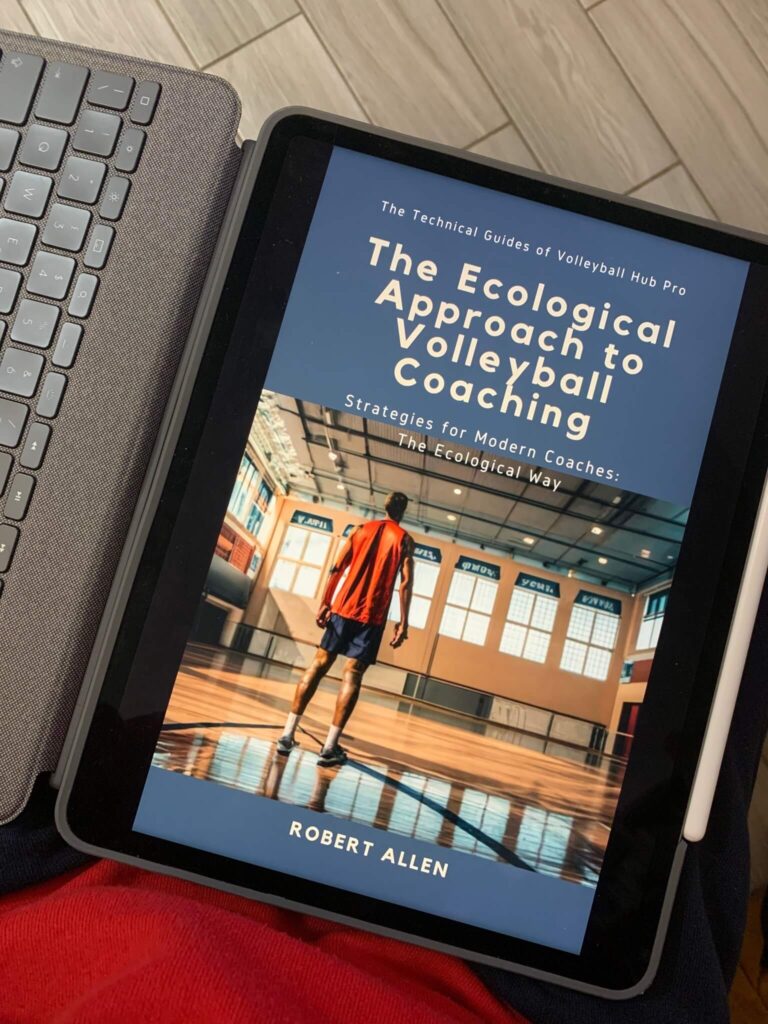









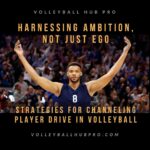

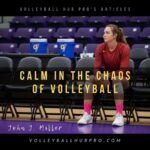
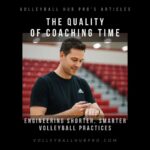




Leave a Reply
You must be logged in to post a comment.